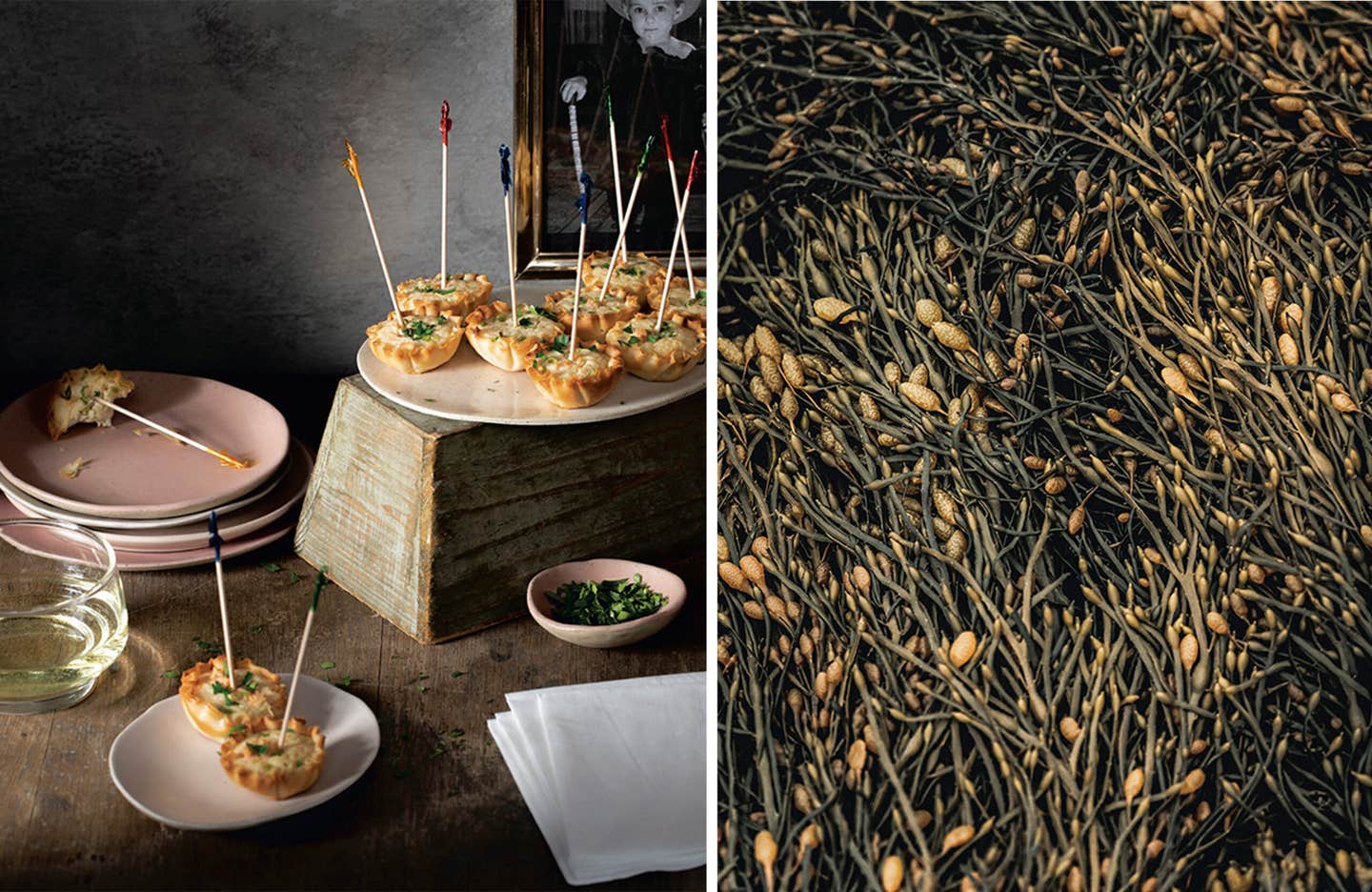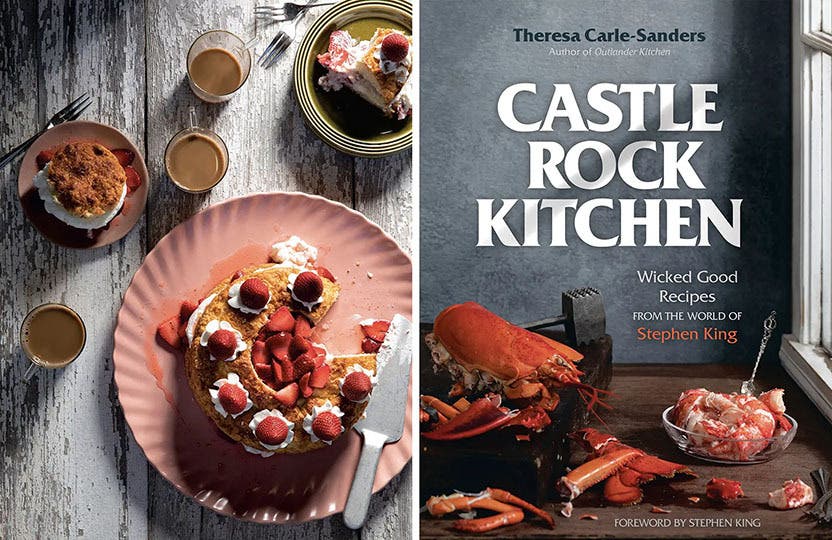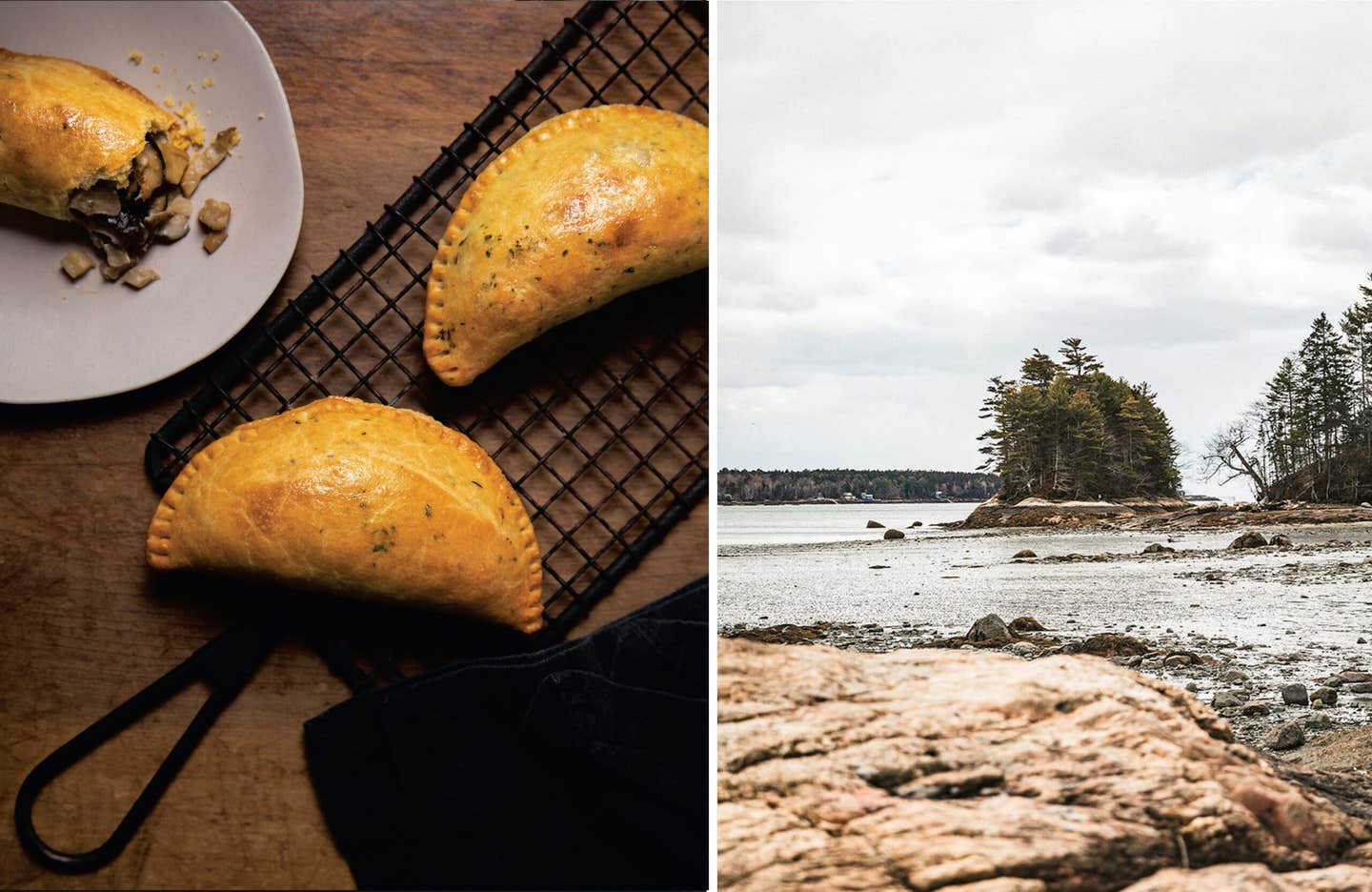
The New Stephen King Cookbook Is as Spooky as it Sounds
Cook your way through some of the horror author’s most blood-curdling stories, from Carrie to Cujo.
In an eerie new cookbook, Castle Rock Kitchen: Wicked Good Recipes from the World of Stephen King, author Theresa Carle-Sanders draws inspiration from dishes that appear in King’s stories set in fictional Maine towns.
It’s almost hard to believe that the homey recipes throughout the volume are plucked from the same pages wherein prom queens are doused in pigs’ blood and house cats get resurrected from the dead.
While King’s settings, such as Castle Rock, may be imagined, the spirit of Maine, where the prolific novelist was born and raised, is not. Throughout his 55 years and counting as one of the country’s most prominent horror, crime, and suspense novelists, he’s been peppering his works, from Carrie to Pet Sematary, with edible references to his New England childhood.
Carle-Sanders, a seasoned cookbook writer and lifelong King fan, had previously penned two volumes filled with recipes based on Diana Gabaldon’s historical fiction series Outlander: Outlander Kitchen and Outlander Kitchen 2. When she wrapped the second, she knew immediately which fictional universe she wanted to tackle next. “You need a certain type of author for a fictional cookbook. They have to be very prolific, they need to have a large fandom, and they need to write food into their stories,” said Carle-Sanders. Check, check, and check.
While King’s and Gabaldon’s writings may seem worlds apart, both novelists allude frequently to eating. Carle-Sanders shared, “People always tell me, ‘I don't see the food in those books,’ and I say, ‘That's because you're not looking for it.’”
Even King’s most blood-curdling stories include thoughtful and often comforting descriptions of food—and plenty of inspirational fodder for Carle-Sanders. For example, a passage from Cujo (a King novel about a killer canine) in which a mother and her son, trapped in their car by the rabid St. Bernard, daydream about large family breakfasts, including French toast. Carle-Sanders excerpts the chilling scene in her recipe for “Dog Days French Toast Casserole,” topped with cranberries, maple syrup, and walnut streusel.

Carle-Sanders reimagines food from such dreary settings as new and mouth-watering dishes grounded in New England flavors. The oatmeal from Rita Hayworth and the Shawshank Redemption, a story set in a bleak prison yard, appears in Carle-Sanders’ cookbook as a cozy morning porridge featuring blueberries, maple syrup, and creamy coconut milk. She also plucks a meal from the pages of The Body (known to many for its 1986 film adaptation, Stand By Me) called “Pioneer Drumsticks”—essentially, burger meat on a stick that the protagonists roasted and wolfed down despite it still being raw inside—and recreates the dish as generously seasoned (and fully cooked) seekh kebabs.
For Carle-Sanders, the process begins, unsurprisingly, with a lot of reading. “I started from the beginning [chronologically], reading on a Kindle, and as I went through, I highlighted all the mentions of food,” explained Carle-Sanders of how she worked her way through King’s 65 novels. Later, she narrowed her focus to stories set in Maine, organized the dishes by course, then started to mold the table of contents.
During the research and recipe development stages, Carle-Sanders relied on a range of sources: Maine cookbooks, old newspaper recipe columns, and King’s own meals growing up.
“He gave me 20 minutes on the phone, which was very generous,” said Carle-Sanders. During that call, King shared his history with food and the quintessential Maine dishes that his mother would prepare for him and his brother.
One, for example, was poor man’s soup, which King’s mother made using two-day-old lobster. Back then, Carle-Sanders explained, lobster was 19 cents a pound; if a guest came over to the house, King’s mother would hide the pot inside the oven, as lobster was considered “poor food.” She would let the lobster simmer for days and use the meat to prepare lobster rolls, or sometimes add cream to make soup out of the broth. In Castle Rock Kitchen, Carle-Sanders’ version is enriched with butter, cream, and dry sherry to make what she describes as “a lovely lobster stew.”

While Maine may bring lobster and clams to many people’s minds, the cuisine of King’s home state, as Carle-Sanders discovered, is rich, varied, and decidedly comforting. As King wrote in the book’s foreword, “When I think of Maine cuisine, I think of red hot dogs in spongy Nissen rolls, slow-baked beans (with a big chunk of pork fat thrown in), steamed fresh peas with bacon, whoopie pies, plus macaroni and cheese (often with lobster bits, if there were left over).”
By the time the book was finished, Carle-Sanders’ own pantry looked like that of a born-and-bred Mainer, teeming with staples like Allen’s Coffee Brandy, the state’s most popular liquor, and Bakewell Cream, a rising agent invented in Maine. If you cook your way through Castle Rock Kitchen, these mainstays, outlined in the cookbook’s “Pantry Notes” section, will likely become fixtures of your kitchen, too.
Food tends to play a supporting but important role in fiction. “When people are gathered around the table, emotions rise and stories get told,” said Carle-Sanders. A whole spectrum of human sentiment appears in the thrilling excerpts throughout Castle Rock Kitchen—followed, of course, by delicious and wholesome recipes that transport you to Maine. In King’s own words, “We like to see you up here in Vacationland, always glad to fix you up with all the crabmeat salad and lobster rolls you can eat (extra points if you ask for lobstah), but if you can’t come, you can always browse the recipes in this book.”
Keep Reading
Continue to Next Story










